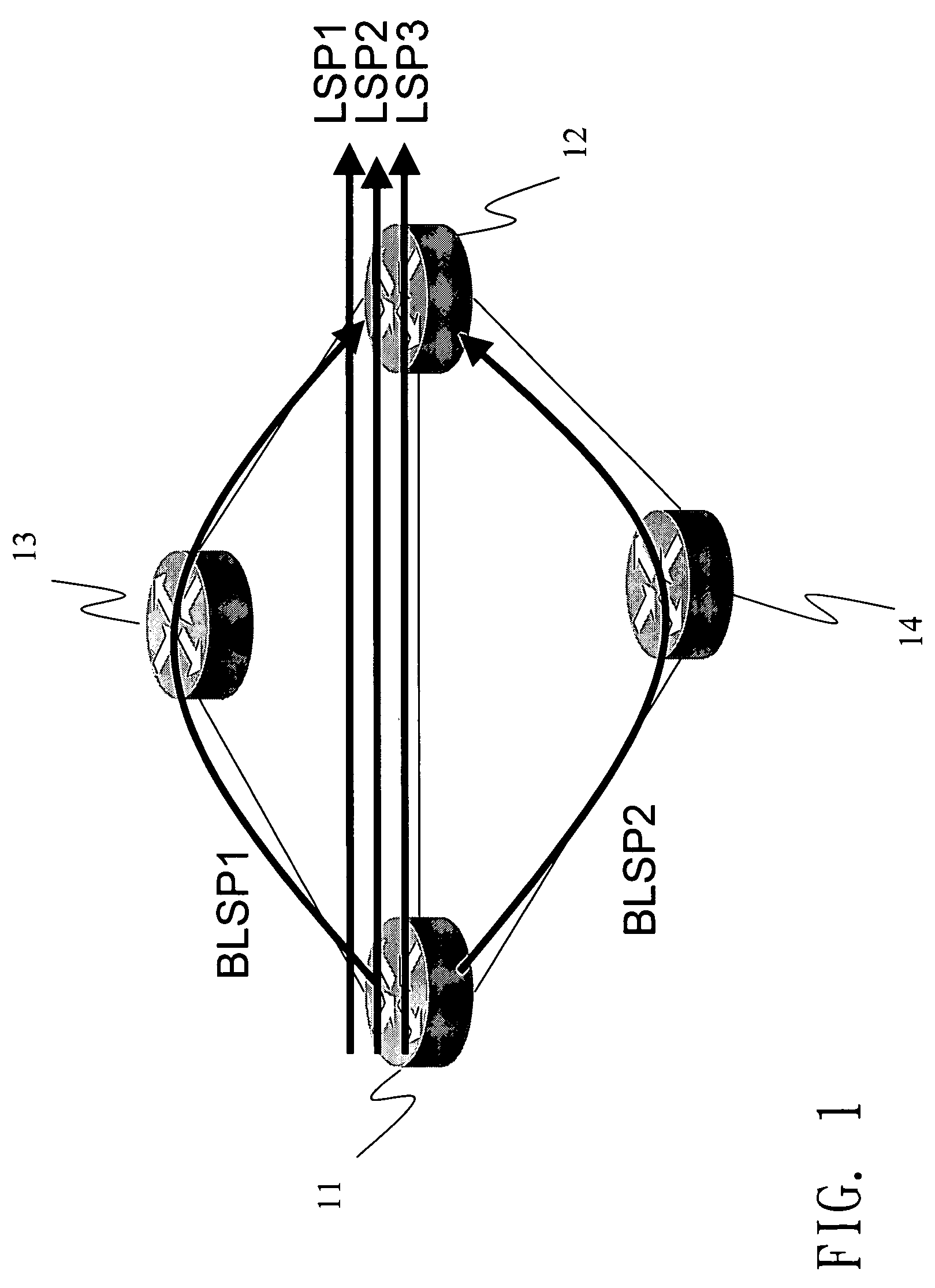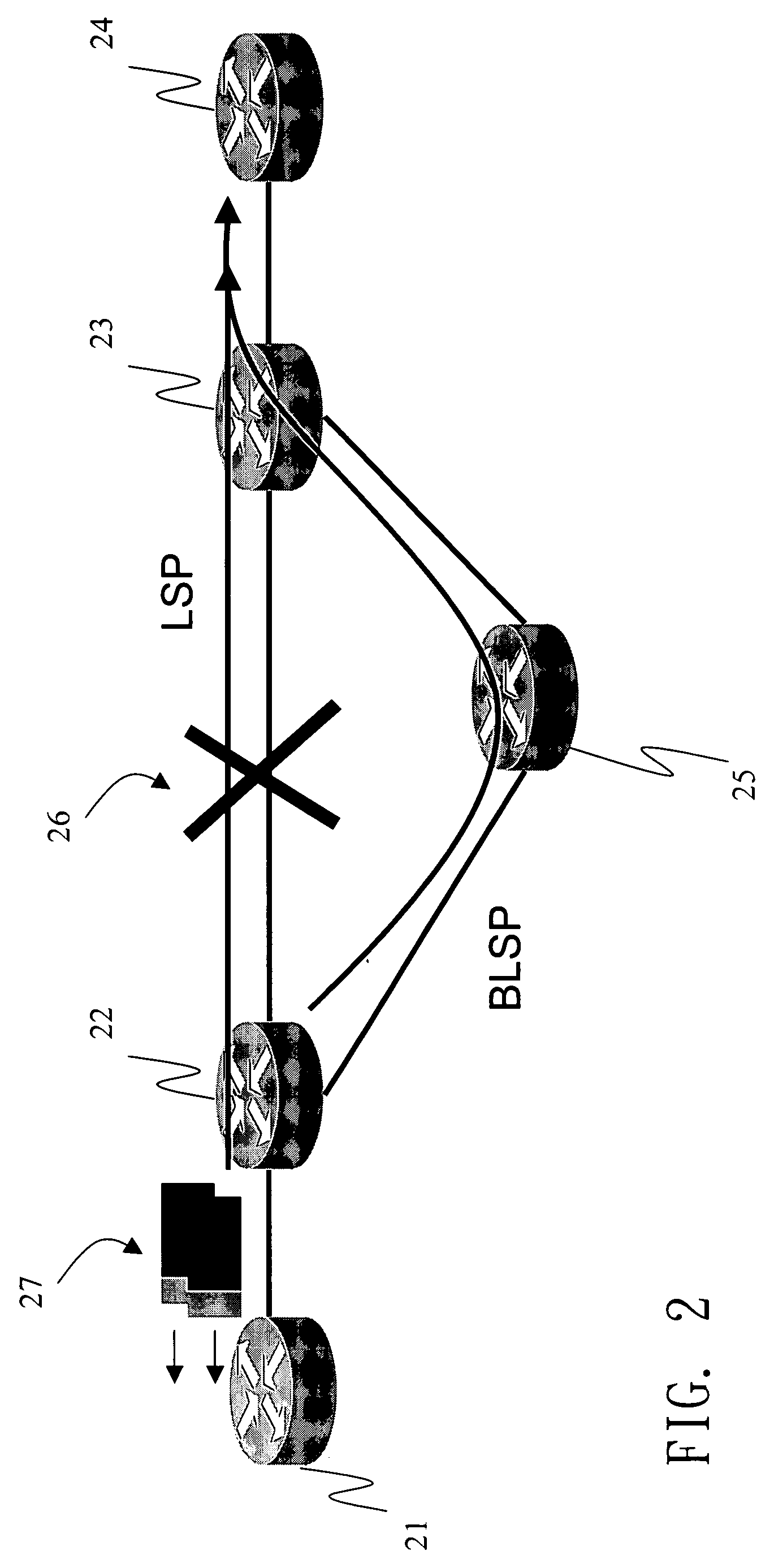Method for MPLS link protection
a multi-protocol label switching and link protection technology, applied in data switching networks, frequency-division multiplexes, instruments, etc., can solve the problems of insufficient backup lsp, insufficient bandwidth utilization optimization, and very busy paths, so as to achieve short service interruption time, high bandwidth utilization, and low overhead
- Summary
- Abstract
- Description
- Claims
- Application Information
AI Technical Summary
Benefits of technology
Problems solved by technology
Method used
Image
Examples
Embodiment Construction
[0016] With reference to FIG. 1, the disclosed method for multi-protocol label switching (MPLS) link protection first builds several backup label switching paths (LSP) among label switching routers 11, 12, 13, 14. In order to prevent several LSP's from sharing the same backup LSP and resulting in congestion on that LSP, a parameter MaxB.W is defined to indicate the maximum bandwidth that can be transmitted over each LSP. This parameter is mainly determined by the transmission capacity of the LSP and that of the backup LSP. For example, suppose MaxB.W=5MB and the quality of service bandwidth parameters of three LSP's LSP1, LSP2 and LSP3 are 3MB, 2MB, and 1MB, respectively. Then one has to establish two backup LSP's, as BLSP1 (11-13-12) and BLSP2(11-14-12) in the drawing. The backup LSP BLSP1 is used to protect the LSP's LSP1 and LSP2 (3M+2M=5M). The other backup LSP BLSP2 is used to protect LSP3. When the backup LSP's are not enough, the network device should send out a warning messa...
PUM
 Login to View More
Login to View More Abstract
Description
Claims
Application Information
 Login to View More
Login to View More - R&D
- Intellectual Property
- Life Sciences
- Materials
- Tech Scout
- Unparalleled Data Quality
- Higher Quality Content
- 60% Fewer Hallucinations
Browse by: Latest US Patents, China's latest patents, Technical Efficacy Thesaurus, Application Domain, Technology Topic, Popular Technical Reports.
© 2025 PatSnap. All rights reserved.Legal|Privacy policy|Modern Slavery Act Transparency Statement|Sitemap|About US| Contact US: help@patsnap.com



